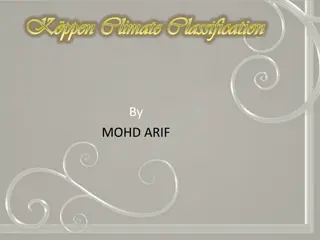Understanding Dyes: Classification and Chemistry in Chemistry Department of Sevadal Mahila Mahavidyalaya
Dyes are organic compounds that impart color to various substrates. Dr. P. P. Chahande presents an in-depth look into dyes, including their classification based on source material and chemical structure. Natural and synthetic dyes are explored, along with a breakdown of different chemical classifications like Nitro, Azo, and more. This comprehensive overview sheds light on the colorful world of dyes in various industries.
Download Presentation

Please find below an Image/Link to download the presentation.
The content on the website is provided AS IS for your information and personal use only. It may not be sold, licensed, or shared on other websites without obtaining consent from the author. Download presentation by click this link. If you encounter any issues during the download, it is possible that the publisher has removed the file from their server.
E N D
Presentation Transcript
SEVADAL MAHILA MAHAVIDYALAYA DEPARTMENT OF CHEMISTRY Topic: Dyes Presented by: Dr(Mrs) P. P. Chahande
CONTENTS: Introduction Classification Classification of dyes Otto Witts Theory Preparation of various dyes
INTRODUTION Dyes are coloured organic compounds that are used to impart colour to various substrates, including paper, leather,fur, hairs, drugs, cosmetics,waxes, greases, plastics and textile materials. A dye is a coloured compound, normally used in solution, which is capable of being fixed to fabrics.
1) CLASSIFICATION BASED ON THE SOURCE OF MATERIAL:- A very common classification of the dye is based on the source of material, a) Natural Dyes b) Synthetic Dyes a)Natural Dyes Natural dyes are dyes or colourants derived from Plants,Invertibrates or Minerals. The majority of natural dyes are Vegetable dyes from plant sources. Example-Roots,Berries,Bark,Leaves ,Wood,etc. Other organic sources include fungi and lichens.
2) SYNTHETIC DYES:- Almost all the colours that you see today are synthetic dyes. Synthetic dyes are used everywhere in everything from clothes to paper, from food to wood. These is because they are cheaper to produce, brighter and easy to apply fabrics. Example- Acid dyes, Azo dyes, Basis dyes, Mordant dyes Azo dye testing
2) CHEMICAL CLASSIFICATION OF DYES:- Dyes may be classified according to the type of chromophores and auxochromes present in their structure. 1)Nitro Dyes 2) Nitroso Dyes 3)Azo Dyes 4) Diphenyl Methane Dye 5)Triphenyl Methane Dye 6) Diphenyl Amine Dye 7) Xanthene Dye 8) Heterocyclic Dye 9) Anthraquinone Dye 10) Indigo Dye 11) Phthalocyanine Dye 12) Florescent Dye
1)NITRO DYE:- They posses nitro(-NO2) group as chromophore and hydroxyl (-OH) group as auxochrome. Example- Naphthol yellow S 2) Nitroso Dyes:- They posses nitroso(-NO) group as chromophore and hydroxyl (-OH) group as auxochrome. Example- GamblineY
3)AZO DYE:- They contain azo group(-N=N-) as chromophore. these azo group is present between two aromatic ring. They are further classified on the basis of nature of auxochrome. a)Cationic Azo Dye:- These are the azo dye, which contains - NH2,-NHR,-NHR2 group as auxochrome. Example- Crysoden G
4)DIPHENYL METHANE DYE:- They are characterised by biphenyl methane nucleas. They are basic dyes used as salts. Example- Auramine 5)Triphenyl Methane Dye:- They posses quinonoid group as auxochrome. Example- Malachite Green and Crystal Vilote
10)INDIGO DYE:- These dyes have-CO-C=C-CO- group as chromophore. Example- Indigo 11)Phthalocyanine Dye:- Example- Copper Phthalocyanine
OTTO WITTS THEORY It is also called as chromophore auxochrome theory The intrinsic colour of a compound is due to presence of certain groups containing multiple bonds which are called chromophores More is the number of chromophore higher is the probability of colour Certain groups have a capacity to intensify the colour produced by chromophore and called as auxochromes Combination of chromophore and auxochrome leads to enhanced colour
NAPHTHALENE, -NAPHTHOL, 1,3-DINITRONAPHTHALENE, 2,4-DINITRO- 1NAPHTHOL (COLOURLESS) (COLOURLESS) (PALE YELLOW) (RED DYE)
PREPARATION OF CONGO RED
PREPARATION OF PHENOLPHTHALEIN Preparation Uses of phenolphthalein Phenolphthalein is used as acid- base indicator
PREPARATION OF CRYSTAL VIOLET
PREPARATION OF ALIZARIN

















































